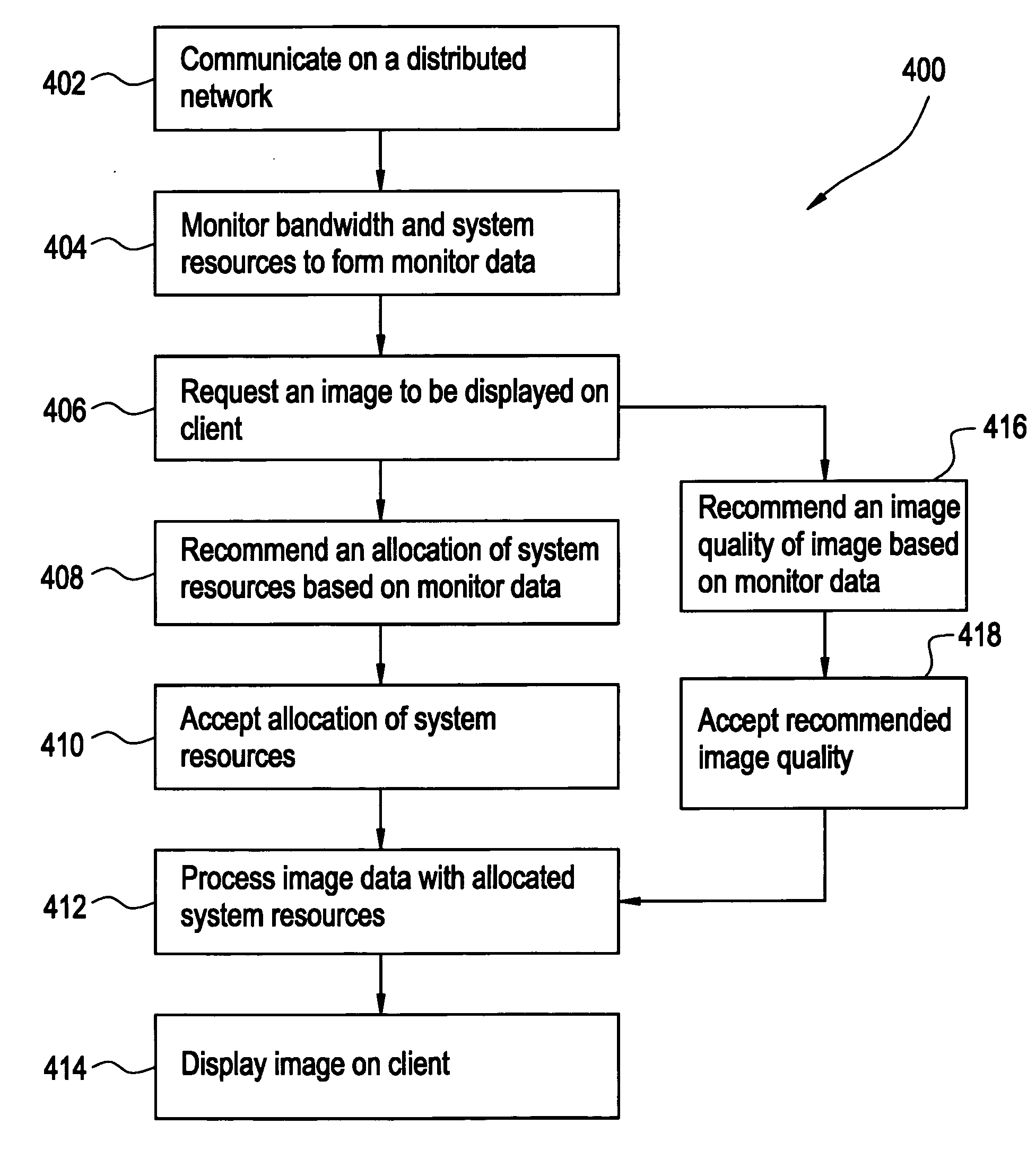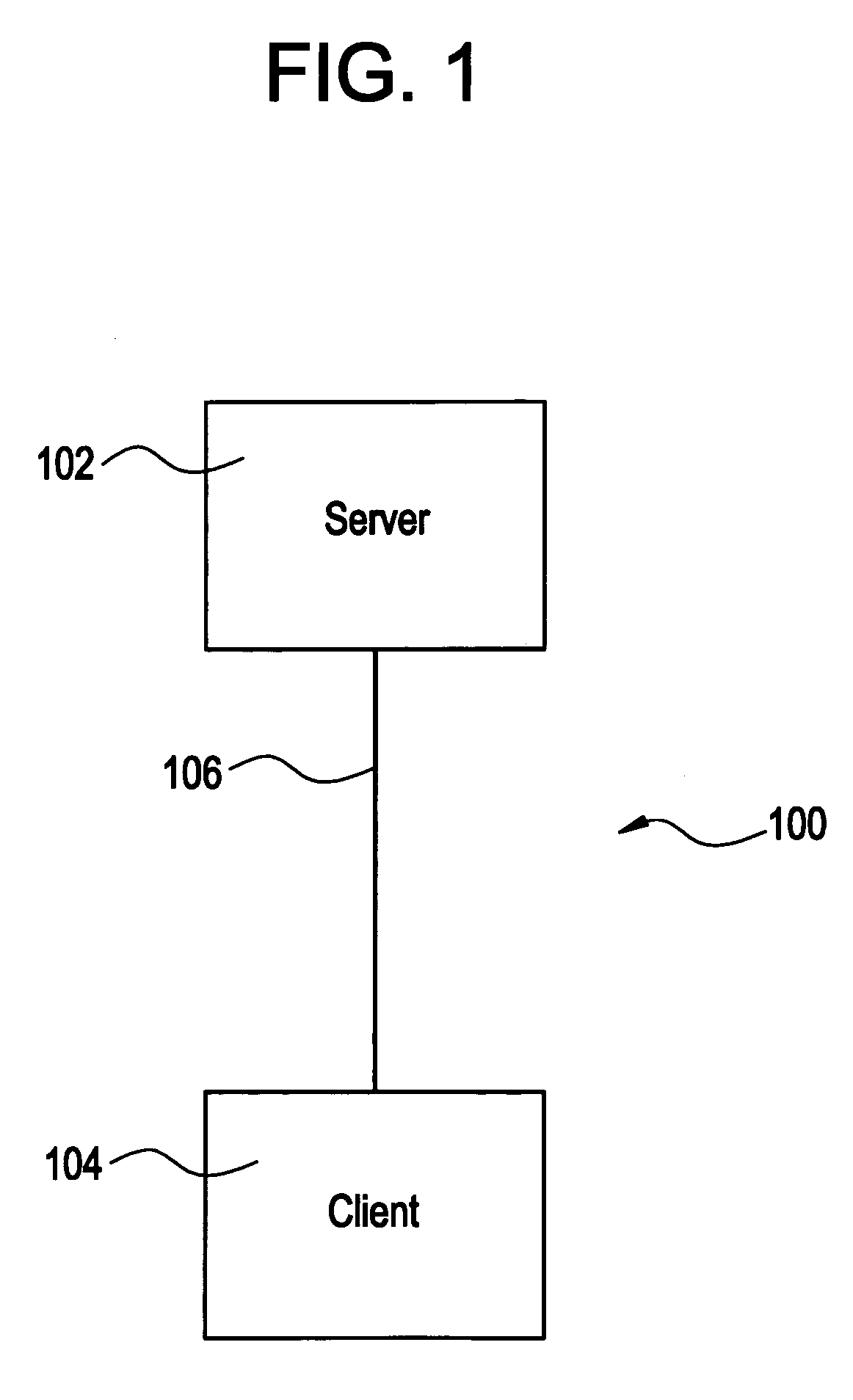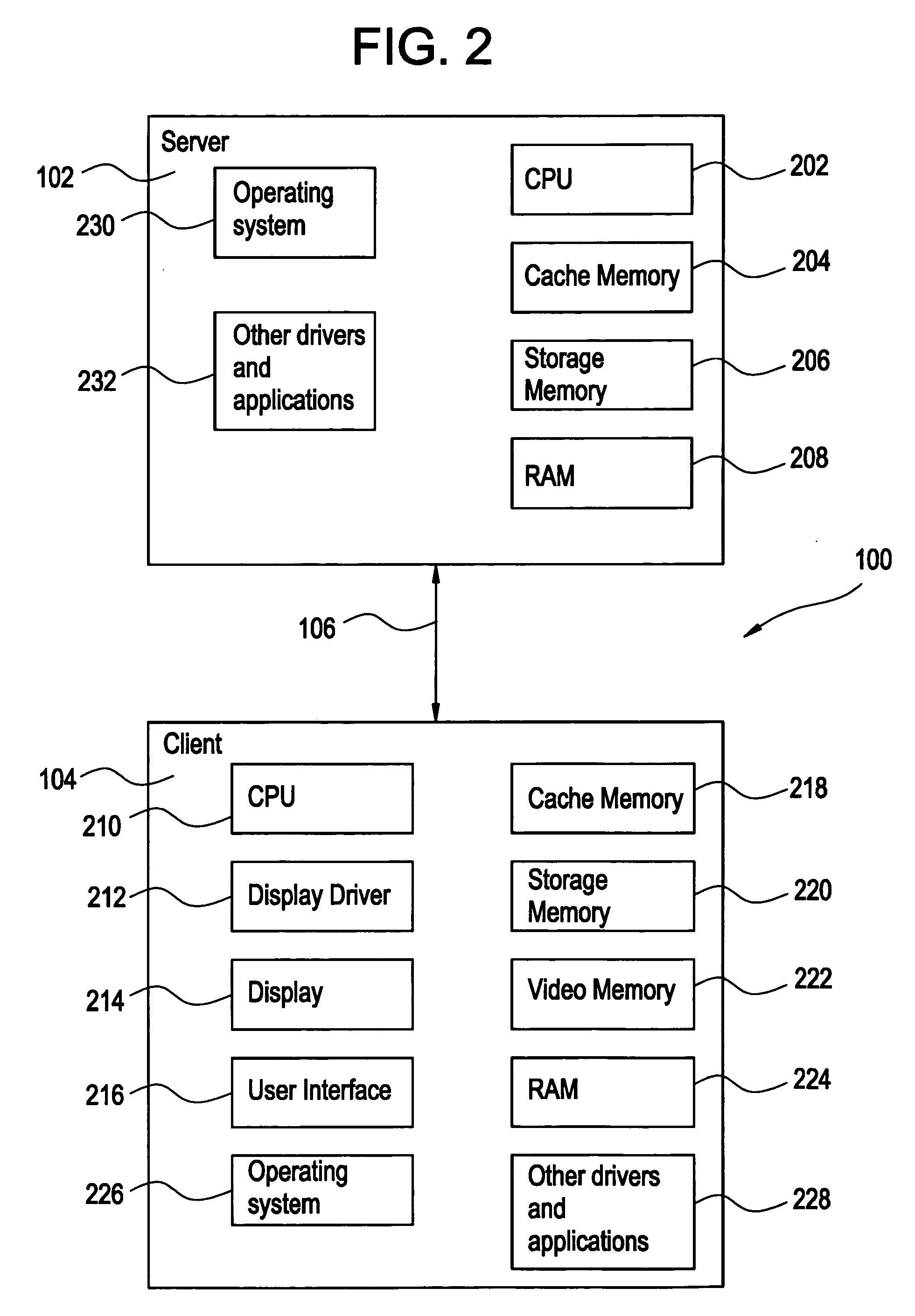Distributed image processing for medical images
- Summary
- Abstract
- Description
- Claims
- Application Information
AI Technical Summary
Benefits of technology
Problems solved by technology
Method used
Image
Examples
Embodiment Construction
[0030]FIG. 1 shows a block diagram of a distributed network 100 according to an embodiment of the present application. Distributed network 100 may include a server 102, a client 104, and a communication pathway 106. The communication pathway 106 has an associated bandwidth. The bandwidth of communication pathway 106 may be uniform across the entire communication pathway 106, or it may vary along various segments. For example, a communication pathway 106 may include a combination of various types of networks having various bandwidths, such as a copper wire twisted-pair network and an optical network. A communication pathway 106 may include a local area network (LAN), wide area network (WAN), wired network, wireless network, optical network, and the like, or any combination thereof. Similarly, a communication pathway 106 may include various network elements, such as routers, repeaters, switches, hubs, splitters, couplers, intermediary computers, or the like.
[0031]FIG. 2 shows a block...
PUM
 Login to View More
Login to View More Abstract
Description
Claims
Application Information
 Login to View More
Login to View More - R&D
- Intellectual Property
- Life Sciences
- Materials
- Tech Scout
- Unparalleled Data Quality
- Higher Quality Content
- 60% Fewer Hallucinations
Browse by: Latest US Patents, China's latest patents, Technical Efficacy Thesaurus, Application Domain, Technology Topic, Popular Technical Reports.
© 2025 PatSnap. All rights reserved.Legal|Privacy policy|Modern Slavery Act Transparency Statement|Sitemap|About US| Contact US: help@patsnap.com



